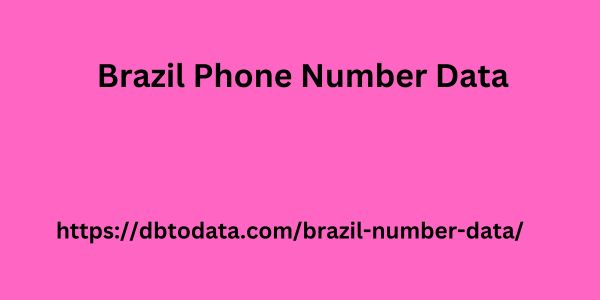Post by account_disabled on Mar 10, 2024 0:42:39 GMT -5
After deciding to enter the world of influencer marketing, the first step in creating a strategy is defining objectives. Define where you want to go with this campaign and know who your target audience is. With these two pieces of information in mind, it will be much easier to find the right influencer for your campaign and achieve success. 1. How to choose influencers When choosing an influencer, it is interesting to use social listening. Go to social media and identify where people are talking about your brand – or your competition – as well as what they are saying. This work can help you search for influential voices that are related to your niche. When you start finding candidates, you need to identify their audience well and make sure that your potential clients are part of that audience. Furthermore, it is important to assess the level of influence this professional has on the public and how he adds value to your brand. As we saw previously, engagement metrics are among the ways to measure campaign success and can help you when choosing an influencer. According to recent data from Upfluence, the best engagement rates are among smaller influencers rather than larger ones.
u engagement According to the survey, micro-influencers on Instagram, for example, have an average engagement rate of 3.86%, and this rate drops across all influencer levels, reaching 1.21% for mega-influencers. On the other hand, whatever the size of the influencer, they will have more engagement on TikTok than on any other platform presented. 2. Define the budget and strategy Now, it’s time to establish the budget and strategy Brazil Phone Number Data details. Will you use just one influencer? How much is your company willing to pay? To answer these questions, consider the time required to plan, execute and review the influencer marketing campaign. The report also revealed that the majority (56%) of brands use the same influencers in different campaigns. Additionally, 67% of respondents use Instagram for influencer marketing, but there has been an increase in TikTok influencer marketing. It was also identified that 67% of respondents prefer influencer marketing to be campaign-based and not always active.

On the other hand, 36% of respondents paid their influencers by giving them product samples and 21% gave them a discount on their products or services (more expensive items). Thus, only 32.4% of companies made cash payments to influencers. 3. Decide on goals and message Improve brand recognition levels and increase sales. As much as these may be your goals, they are very general. Therefore, when setting more direct objectives, such as increasing your customer base in a younger demographic or reaching a new group of users with a new product, for example. Influencers can reach very specific audiences who, most likely, are interested in your product and will read and engage with the content developed. Therefore, it is also interesting to create a work calendar in which it is possible to cultivate this relationship between brand, influencer and audience, in order to refine your approach through experience on what works and what doesn't work in your niche. Digital influencer content brings a personal conversational tone that differs from traditional marketing campaigns.
u engagement According to the survey, micro-influencers on Instagram, for example, have an average engagement rate of 3.86%, and this rate drops across all influencer levels, reaching 1.21% for mega-influencers. On the other hand, whatever the size of the influencer, they will have more engagement on TikTok than on any other platform presented. 2. Define the budget and strategy Now, it’s time to establish the budget and strategy Brazil Phone Number Data details. Will you use just one influencer? How much is your company willing to pay? To answer these questions, consider the time required to plan, execute and review the influencer marketing campaign. The report also revealed that the majority (56%) of brands use the same influencers in different campaigns. Additionally, 67% of respondents use Instagram for influencer marketing, but there has been an increase in TikTok influencer marketing. It was also identified that 67% of respondents prefer influencer marketing to be campaign-based and not always active.

On the other hand, 36% of respondents paid their influencers by giving them product samples and 21% gave them a discount on their products or services (more expensive items). Thus, only 32.4% of companies made cash payments to influencers. 3. Decide on goals and message Improve brand recognition levels and increase sales. As much as these may be your goals, they are very general. Therefore, when setting more direct objectives, such as increasing your customer base in a younger demographic or reaching a new group of users with a new product, for example. Influencers can reach very specific audiences who, most likely, are interested in your product and will read and engage with the content developed. Therefore, it is also interesting to create a work calendar in which it is possible to cultivate this relationship between brand, influencer and audience, in order to refine your approach through experience on what works and what doesn't work in your niche. Digital influencer content brings a personal conversational tone that differs from traditional marketing campaigns.






